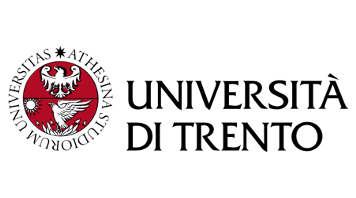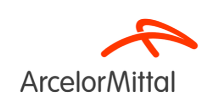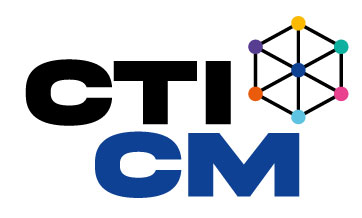
The Universidade de Aveiro (UAveiro), Portugal, was founded in 1973, being now an exponent of quality and progress, occupying an outstanding place in the field of high education. Part of the University's success lies in the fact that it offers innovative courses closely allied with regional and national productivity, and as yet unexplored by the traditional Portuguese institutions of high education. At present, the Department of Civil Engineering of the University has a group working for several years in the field of steel structures submitted to fire. Among their work is a proposal for lateral torsional buckling adopted by the EN 1993-1-2: 2005, a new proposal for beam-columns under fire conditions and more recently proposals for Class 4 members exposed to fire (cross-sectional resistance, lateral-torsional buckling and beam-columns with and without lateral restraints). In addition, proposals for the design of structural stainless-steel elements under fire conditions were also made. Professor Paulo Vila Real was the Project Team Leader of SC3.T6 (Fire design of Steel Structures - revised EN 1993-1-2), responsible of drafting the second generation of the fire part of the Eurocode 3, and the Chairman of Technical Commission no. 3 (TC3) - Fire Safety of Steel Structures of the European Convention for Constructional Steelwork (ECCS). He is the head of fire resistance laboratory, was responsible for drafting the national Annexes of fire parts of the Eurocode 3, 4 and 9, has coordinated several national projects, including TaperSteel, and was local Principal Investigator of the RFCS projects, DIFISEK+, MACS+, LOCAFI+ and FIDESC4.

České vysoké učení technické v Praze (CVUT), Czech Republic, has over 18000 students, of which 5000 are in the Faculty of Civil Engineering. Research is currently focused on composite steel and concrete structures, fire design, thin-walled structures and structural connections. The department has 14 employees and 47 PhD students. Professor Frantisek Wald has published about 58 papers on connections, fire, aluminum structures and scaffolding, he is a member of ECCS TC-10 Connections, TC-3 Fire and TC22 Design by FEM. He is in charge of the Erasmus Mundus Masters Program Sustainable constructions under natural hazards and catastrophic events and chaired the COST TU0904 Integrated Fire Engineering and Response. He is involved in research projects on connections and fire design and coordinates nine European and twenty-five Czech projects. The laboratory of the department is well equipped for both teaching and research. For fire design experiments, it offers small furnaces, electric and gas heaters, furnaces for testing materials at elevated temperatures, and room corner test for ignition tests.

The Department of Civil, Environmental and Mechanical Engineering (DICAM) of the University of Trento, Italy, covers different research areas in Structural Engineering of great current interest, such as the analysis of the behaviour of new and existing structures subjected to extreme loadings such as earthquake and fire, with long experience in the analysis of steel and steel-concrete composite structures (e.g., INERD, PRECIOUS, ATTEL, HITUBES, INDUSE2SAFETY, ROBUSTIMPACT, DISSIPABLE, LOCAFIplus and FISHWALL RFCS Projects). The research activities rely heavily on a balanced and integrated use of experimental testing, analytical and numerical modelling. DICAM manages the Materials and Structural Testing Laboratory, whose essential parts are the 9.5 m tall pre-stressed concrete bi-directional reaction wall and the 42 m long reaction floor. UNITN is very active at the European and international level in terms of project and collaborations. Professor Nicola Tondini has been active for several years in the research of the behaviour of steel and steel-concrete composite structures subjected to accidental actions; in particular earthquake and fire. He has been a member of the Project Team for the revision of EN 1991-1-2 “Mandate M/515 phase 1 tasks for the development of the 2nd generation of EN Eurocodes. STC1 EN1991-1-2: Actions on structures exposed to fire”. He is part of Working Group UNI/CT 021/GL 01 “Structural Fire Engineering” of Italian Standard Body, UNI.

ArcelorMittal Belval & Differadange SA (AMBD), Luxembourg, is a part of ArcelorMittal Group; the world's largest steel producer. It is represented by the Department of Construction and Infrastructure Applications (CIA) Global R&D located in Esch-sur-Alzette, Luxembourg. The CIA department supports steel construction market specially linked with mills producing hot-rolled products of Belval, Differdange and Rodange in Luxembourg, Bergara, Olaberria in Spain, Dabrowa in Poland. ArcelorMittal is the main hot rolled profile producers for the European construction market. CIA has an extensive experience in the applied steel construction research. The members of staff have outstanding academic records and are highly recognized on the European level. They are involved in standardization activities of CEN-TC250, project teams, technical committees of ECCS and TGA4 of RFCS. The centre has been working for decades with Universities, Research Centres, Steel Producers and Customers all over Europe. It is mainly involved in: a) development of new applications, new products and technical solutions to facilitate the use of steel in construction; b) development of user-friendly software for pre-design dedicated to engineering offices and architects; c) development and modifications of international codes for the easier use of steel; and d) dissemination of knowledge by application to real buildings through partnerships with engineering offices and architects. In the area of steel and composite structures the centre has been involved in many RFCS research projects (e.g.: “ROBUSTFIRE”, “LOCAFI”, “ADBLAST”, “DISCCo”, “SLIMAPP”, “TRAFIR”, “DREAMERS”) and valorisation projects ((e.g.: “DIFISEK+”, “SECHALO”, “EUROBUILD+”, “MACS+”,“HIVOSS”, “SBRI+”, “LOCAFI+”).

Centre Technique Industriel de la Construction Métallique (CTICM), France, is the research and information institute for the Constructional Steelwork industry in France, with about 60 technical and support staff employees. It produces standards, provides continuous education, publications, technical software and design studies, which are activities based on extensive research work. The Structural R&D department of this institute has extensive knowledge in structural design, numerical and analytical investigation of steel and composite structures, research activities and software development. It has been involved in a wide range of RFCS and former ECSC research projects related to fire safety of steel constructions.